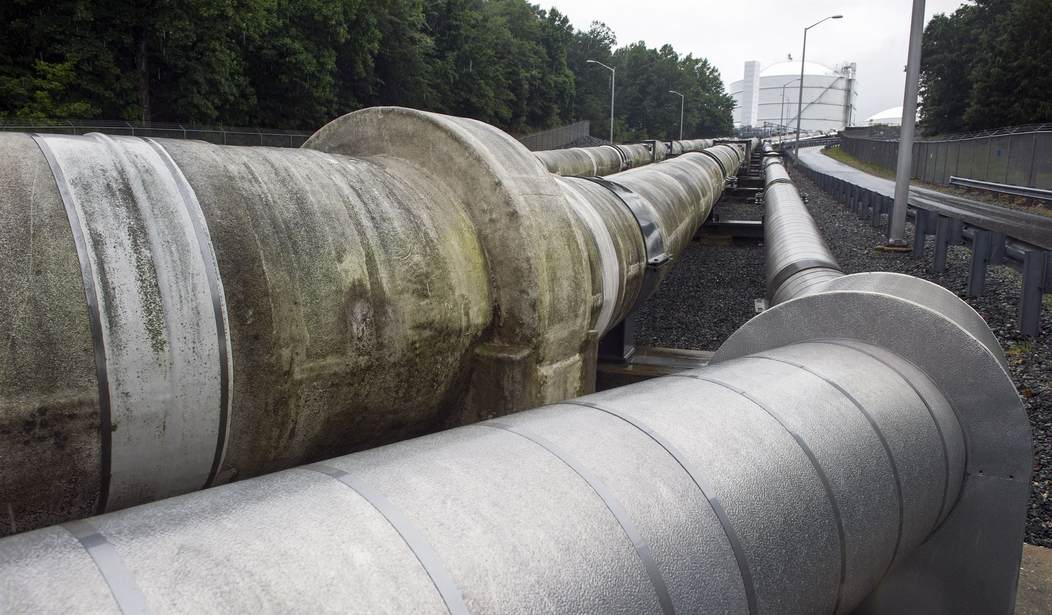We all know how this has played out. This summer Russia started monkeying with the natural gas supply to Germany and the rest of Europe, claiming there was some technical problem that required maintenance. Then they cut the gas off completely and not long after that someone blew up the Nord Stream pipeline. The result of all this has been a huge spike in energy prices in Europe and concern that there might not be enough gas to heat homes this winter.
But here we are in late October and the situation is looking very different. For one thing, Europe has mostly filled the underground gas storage tanks for the winter. Collectively, the plan was to fill storage to 80% by November 1 but with a week left to go, European storage is 93.4% filled.
When Russia started playing with the gas supply, prices went way up but now the opposite is happening. Prices have dropped below $100 for the first time in months and there are lots of liquified natural gas tankers floating off the coasts of Europe waiting to unload.
Sixty LNG tankers have been idling or slowly sailing around northwest Europe, the Mediterranean, and the Iberian Peninsula, according to MarineTraffic. One is anchored at the Suez Canal. Eight LNG vessels that came from the U.S. are underway to Spain’s Huelva port.
“The wave of LNG tankers has overwhelmed the ability of the European regasification facilities to unload the cargoes in a timely manner,” said Andrew Lipow, president of Lipow Oil Associates…
European gas prices had soared above 340 euros ($332.6) per megawatt hour in late August, but this week dipped below $100 for the first time since Russia cut supplies. Before the war, the price had been as low as 30 euros.
An investment analyst did a Twitter thread on this yesterday.
European countries "mail-ordered" massive amounts of Liquid Natural Gas after the European Comission asked countries to move ahead of the curve in June
But suddenly there is no where to place the gas arriving via the sea in France, Italy and Spain
3/n pic.twitter.com/SV4Ie6gOUG
— AndreasStenoLarsen (@AndreasSteno) October 24, 2022
The price of storing LNG at ships is also going bananas as operators hope that the net demand/supply balance will flip in 3-4 weeks from now when the heating season kicks in..
5/n pic.twitter.com/lf4PzEWoM7
— AndreasStenoLarsen (@AndreasSteno) October 24, 2022
And there’s one more factor that is creating a short term over-supply. The temperature in Europe has been well-above average so far, meaning less gas is leaving those underground storage tanks than anticipated.
The weather forecast for 1 Nov still points to >15 degrees celsius across the European continent way above usual averages, which hints that the over-supply will continue another week or two at least
7/n pic.twitter.com/1RkQexklk7
— AndreasStenoLarsen (@AndreasSteno) October 24, 2022
It has been an unseasonably warm October.
📈 It's been a mild October so far and this week will remain unseasonably warm
A trough in the jet stream keeps low pressure anchored to the west of the UK and maintains southerly winds, allowing temperatures to reach the low 20s Celsius in places pic.twitter.com/boLUd9tktp
— Met Office (@metoffice) October 24, 2022
And the result of all of this is that prices should keep dropping.
Bottom-line:
1) Storages are close to being filled 100%
2) Prices to store LNG at ships is sky-rocketting
3) The weather forecast remains mildDon't rule out prices close to 0 soon
9/n
— AndreasStenoLarsen (@AndreasSteno) October 24, 2022
But as good as this looks, the situation could turn very quickly. That’s because Europe’s gas storage needs continual resupply. So if the weather suddenly turns cold, the surplus could disappear in a matter of days or weeks. Unfortunately, there’s no telling what things will look like a month from now. Here’s the cautious view from a commodities analyst.
And Europe has not yet began to consume gas as it experiences and exceptionally mild October so far.
4/n EU gas withdrawal in (GWh/day) pic.twitter.com/vdkByJGqIQ
— Alexander Stahel 🇺🇦 (@BurggrabenH) October 19, 2022
So is the gas crisis over? Of course not.
Europe needs to replace even more LNG in 2023 which will get much harder.
One way to verify that is by looking at the futures curve. It prices TTF at €140/MWh come Nov 2022 and into April 2024.
5/n pic.twitter.com/MXhkvuPjO2
— Alexander Stahel 🇺🇦 (@BurggrabenH) October 19, 2022
So how can Europe balance its 2023 market?
It will have to source approx 210bcm LNG, ceteris paribus.
That is 60bcm > than 2022 (which was 60bcm > than 2021).
Weather + Groningen field spare cap of 20bcm are only factors that can change this forecast meaningfully.
8/n pic.twitter.com/c8Tt22CfKy
— Alexander Stahel 🇺🇦 (@BurggrabenH) October 19, 2022
In short, even if they get through this winter in good shape, they are still going to need even more gas next year and that won’t be easy or cheap to do.








Join the conversation as a VIP Member